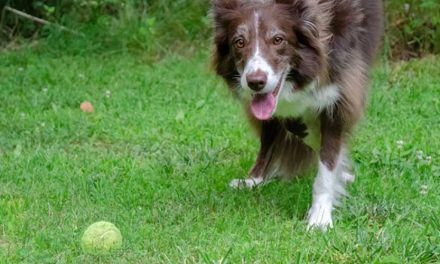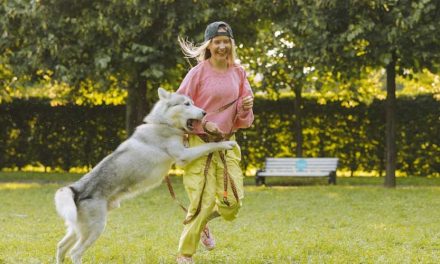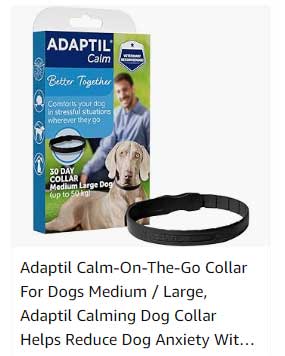For dog owners, the quest to nurture a well-behaved and anxiety-free canine companion is an ongoing endeavor. Classical counterconditioning is a powerful tool that can transform your dog’s emotional responses to various stimuli, making it a pivotal practice for fostering positive behaviors and emotional well-being.
CLASSICAL COUNTERCONDITIONING
This comprehensive guide will walk you through the principles of classical counterconditioning and reveal how this psychological mechanism can be harnessed to reframe your dog’s perception of environmental triggers, reduce fears, and pave the way for a more harmonious relationship between you and your furry friend.
UNDERSTANDING CLASSICAL COUNTERCONDITIONING
Classical counterconditioning is a type of associative learning, often tied to Pavlovian conditioning, where a new response is learned to a previously neutral stimulus. In the context of dog training, this method aims to change your canine’s negative emotional reactions to a particular stimulus by reconceptualizing how they perceive it.
The process involves pairing the troublesome stimulus with a positive or neutral response. Over time, through repeated exposure to the new stimulus, the dog’s conditioned response transforms from fear or anxiety to one that is relaxed, happy, or at least neutral.
THE BASIC CONCEPT
To put it simply, if your dog is afraid of something, say, the vacuum cleaner, you can use classical counterconditioning to change their emotional association with it. Instead of fear, you want the vacuum to signal treats, playtime, or something your dog loves. With enough positive reinforcement, your dog will start to anticipate these positive outcomes when they see the vacuum, effectively neutralizing their fear.
CLASSICAL VS. OPERANT CONDITIONING
While classical conditioning focuses on forming associations between an environmental stimulus and an innate, involuntary response, operant conditioning deals with the modification of voluntary behaviors with the use of consequences. Both these methods are significant in training and behavior modification, but they differ in their core focus and application.
APPLYING CLASSICAL COUNTERCONDITIONING IN PRACTICE
The application of classical counterconditioning for your dog’s benefit is an undertaking that requires patience, time, and strategic planning. Below, you’ll discover the practical steps to initiate the process and the best practices for effective implementation.
IDENTIFYING THE BEHAVIOR TO MODIFY
Before beginning any conditioning work, it’s crucial to pinpoint the specific behaviors you wish to address, such as aggression towards unfamiliar dogs, separation anxiety, or nervousness around loud noises. Identifying the behavior will allow you to tailor your counterconditioning plan to your dog’s unique triggers and reactions.
CREATING A POSITIVE ASSOCIATION
Once you’ve identified the trigger, the next step is to introduce a high-value reward that your dog adores, such as treats, toys, or play. You’ll want to start with a lower intensity version of the trigger and pair it with the positive reinforcer consistently, ensuring a 100% positive experience for your dog.
GRADUALLY INTRODUCING THE TRIGGER
Systematically increase the intensity of the trigger as your dog becomes more comfortable with the process. This phase demands incremental changes – patience and consistent pacing are the keys to success. If at any point your dog shows signs of stress, simply backtrack to the previous level that they were comfortable with and reinforce the positive association before proceeding.
CONSISTENCY IS KEY
For classical conditioning to take hold, you must be unwaveringly consistent in your approach. Praise and reward your dog consistently in the presence of the trigger to reinforce the new, positive association. Remember that failing to maintain consistency can undo any progress you’ve made.
COMMON SCENARIOS FOR CLASSICAL COUNTERCONDITIONING
Now, let’s explore some everyday situations where classical counterconditioning can effectively address your dog’s behavioral issues, providing practical insights for initiating the conditioning process.
MITIGATING FEAR OF BATH TIME
Many dogs dislike bath time, associating it with unpleasant experiences. By pairing each interaction with the bath with an enjoyable activity – such as playing with a favorite toy or receiving tasty treats – dogs can learn to tolerate and, eventually, enjoy the grooming session.
ADDRESSING SEPARATION ANXIETY
Separation anxiety can be a distressing experience for dogs and owners alike. Using classical counterconditioning to teach your dog that leaving them alone results in rewarding activities can reduce anxiety significantly. Departures should become cues for treats, toys, or other enjoyable interactions.
CURBING FEAR OF STRANGERS
Averse reactions to strangers can stem from a dog’s initial fear response to the unknown. Counterconditioning can involve having strangers give your dog treats, gradually helping them associate new people with positive experiences rather than fear.
THE BENEFITS OF CLASSICAL COUNTERCONDITIONING
Implementing classical counterconditioning into your training routine offers an array of benefits beyond addressing specific behavioral concerns. These advantages extend to your dog’s overall well-being, the strength of your bond, and the peace of mind for both you and your pet.
ENHANCING EMOTIONAL STATE
By changing negative perceptions of particular stimuli, classical conditioning can significantly improve your dog’s emotional state. Dogs that once exhibited signs of stress or fear can become calm and relaxed in response to the previously intimidating trigger.
STRENGTHENING THE OWNER-DOG RELATIONSHIP
The mutual reliance on and enjoyment of the counterconditioning process foster a deeper level of trust and affection between you and your dog. The shared positive experiences can enhance the bond and serve as a foundation for other aspects of training and interaction.
PROVIDING A VALUABLE COPING MECHANISM
Through counterconditioning, dogs learn a positive way to cope with the stressors of everyday life. This valuable skill can carry them through various situations, enabling them to face fears and uncertainties with a confident and composed demeanor.
THE ROLE OF PROFESSIONAL HELP IN CLASSICAL COUNTERCONDITIONING
While many dog owners find success in employing classical counterconditioning techniques on their own, there are instances where enlisting the help of a professional dog trainer or behaviorist might be advantageous.
TRAINERS WITH EXPERTISE
Professional trainers have the experience, understanding, and often, a broader repertoire of techniques to address complex behavior issues effectively. Their expertise can be invaluable in customizing a program that suits both your dog’s needs and your capabilities.
BEHAVIORAL ASSESSMENTS
In cases of extreme fear or aggression, a comprehensive behavioral assessment by a professional can provide crucial insights into the potential underlying causes and the best course of action for counterconditioning.
ONGOING SUPPORT
Professional trainers can offer not only initial guidance but also ongoing support and troubleshooting as you work through your counterconditioning plan. Their presence provides reassurance that you’re on the right track and adjustments can be made if progress stalls.
CASE STUDIES AND SUCCESS STORIES
The proof of classical counterconditioning’s efficacy lies in the myriad success stories from dog owners who’ve dedicated themselves to applying the principles in their training regimens. Immersing yourself in real-life examples can inspire, validate, and provide practical guidance as you enter your own counterconditioning endeavors.
OVERCOMING FEAR AGGRESSION
One notable case involved a dog with severe fear-based aggression towards guests in the home. Through diligent counterconditioning efforts, the dog learned to associate visitors with positive experiences and, over time, welcomed them with wagging tails instead of growls.
QUELLING NOISE PHOBIAS
A dog with a profound fear of thunderstorms witnessed a remarkable transformation after classical counterconditioning techniques were implemented. Loud noises that once sent the dog into a state of panic became triggers for expecting playtime and treats.
MANAGING CAR ANXIETY
For the owner of a dog that despised car rides, classical counterconditioning turned the dread into delight. Each step, from near the parked car to a short ride with treats and comfort, gradually altered the dog’s perspective, making car trips a joyful affair.
PRACTICAL TIPS FOR SUCCESS
To ensure your classical counterconditioning efforts yield the desired results, here are some practical tips to incorporate into your training plan.
RECORD PROGRESS
Keeping a journal of your training sessions can help you chart your dog’s progress. Note any changes in behavior, signs of increased comfort, and areas where consistent reinforcement is needed.
ADAPT TO YOUR DOG’S PACE
Every dog has its own learning curve. Be prepared to adjust your intensity, duration, and rate of exposure to triggers based on your dog’s reactions during the training process.
CELEBRATE SMALL VICTORIES
Recognize and celebrate each step forward, regardless of how minor it may seem. These small victories are building blocks to the larger behavioral changes you seek.
CONCLUSION
Classical counterconditioning is a testament to the malleability of the canine mind and the incredible power of positive reinforcement. By using this method, dog owners can reshape their pets’ emotional responses to the world around them, transforming fear into joy, anxiety into calm, and despair into hope.
Engaging in the practice of classical counterconditioning is more than a training exercise – it’s an exploration of the trust and love shared between you and your dog. With the insights shared in this comprehensive guide and a steadfast commitment to the process, you’ll be well on your way to unlocking a brighter, more confident future for your beloved canine companion.
Credit: Original Photo by Tim Cooper on Unsplash










